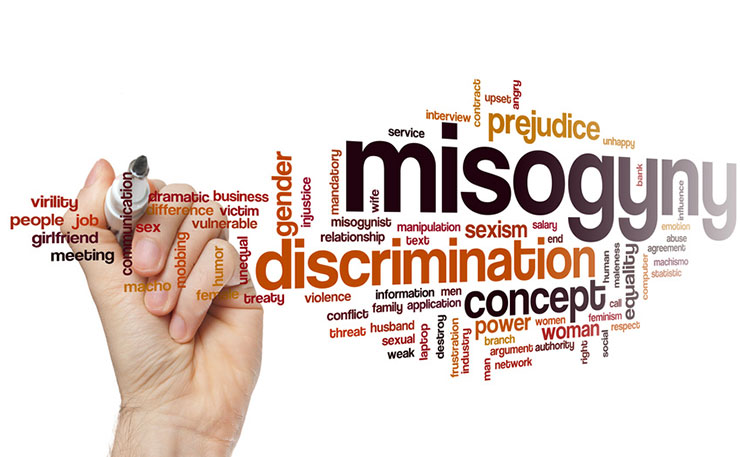Same old battle against misogyny, but a new front in a different era. Xiaoran Shi explains.
The recent momentum opposed to online sexual harassment had been charting a steady ascent until the proverbial balloon was popped on Tuesday by University of Melbourne student and self-described male feminist Jack Kilbride, who broke the news, for New Matilda no less, that the “vitriolic writing style” of feminists like Clementine Ford is “not the answer” after all.
The cost of alienating misogynists and perpetrators of gendered violence is too harmful to the movement, Kilbride argued, and the answer lies instead in addressing such men with deference and inviting them into feminist discourse with open arms.
Needless to say, this drew the attention and ire of an unprecedented number of readers, and rightfully so.
The thesis put forward by Kilbride cannot be simply dismissed as the adorably miscommunicated yet ultimately well-intentioned counsel of a male ally. Rather, it should be characterised for what it is: the reification of patriarchal codes of domination articulated through the guise of a benevolent liberalism.
From the article’s opening lines, Kilbride is eager to establish himself as one of the good guys, so to speak, by listing his progressive credentials, as though this renders him immune to the stench of mere association with sexism.
A man who’s not afraid to label himself a feminist? Check. A man who “whole-heartedly condemn[s]” online sexual harassment? Check. A man who would go so far as to “commend” the sacking – the very economic emasculation – of his fellow man for making chauvinistic remarks? Double check.
However, Kilbride is undone by his own ideological schema. By simultaneously depicting himself as a committed member of the feminist movement whilst distancing himself from “the other men” who rape, stalk, sneer and slut-shame, the author betrays a lack of knowledge regarding, or perhaps more sinisterly, an antipathy towards confronting the structural nature of patriarchy, as well as an aversion, conscious or otherwise, to relinquishing the power and privileges he derives from his masculinity.
This first aspect is clearly illustrated in Kilbride’s claim that to adequately address gender inequality, we must “stop trying to knock down the wall and instead, start helping people climb over.”
Given that the wall referred to here symbolises patriarchy, the author’s call to action is absurd. Feminism strives to dismantle the deeply entrenched rhizomatic structures of patriarchy, which is embodied by institutions, by culture, by history, not by individual men.
Patriarchy is not an inconvenient, albeit surmountable barricade, it is a pervasive and insidious apparatus governing relations of power and control between genders.
This explains Kilbride’s appraisal of Emma Watson’s anodyne HeforShe campaign, which seeks to “improve society as a whole, not just the lives of women.” These are the only terms under which a misogynist can accept feminism, namely, that the anxieties brought about by the losses to the masculine concentration of power are assuaged with the promise that although women’s lot will get better, so will the lot of men, thereby guaranteeing the preservation of the gendered power dynamic.
Take also the example of Kilbride’s appraisal of Ford’s rhetoric as “illuminating the dark, misogynistic corners of society.” Here, the author falls into the trap of drawing upon the antiquated notion of the kind of sexism that lurks in claustrophobic alleyways waiting to pounce, when in reality, one need only log on to Facebook, walk down the street or flip through a magazine to be greeted by the smiling assassin that is misogyny.
Whilst I do not contest the idea that men can be feminists and indeed agree that men must be invested in women’s liberation for mass scale change to occur, the process of feminist consciousness and praxis is not arrived at by merely calling oneself a feminist, as Kilbride proclaims to be.
Sadly for him, gender politics have not been and never will be advanced on the grounds of self-identification.
Aided by the mask of progressive politics adopted by the author, the ideological function of Kilbride’s construction of a bipartite masculinity delineating a vast gulf between his own enlightened masculinity and that of the leering, brutish ‘other’ is twofold.
Firstly, this dichotomy lends legitimacy to the fallacy that male feminists such as Kilbride are exempt from implication within the machinery of patriarchal control because they do not exhibit the violent oafishness or criminal delinquency of the masses, their polar counterpart.
“We are not the people assaulting our women in the streets, scoffing at calls for equal pay, or abusing writers on the Internet. We are already on your side,” writes Kilbride.
The outsourcing of blame entirely to this manufactured ‘other’ is an attempt to evade the trauma of confronting one’s own complicity with the patriarchal apparatus, which in turn, substantiates the circumvention of a progressive morality that would have otherwise prohibited one from exercising his gendered power.
Without painting a vivid picture of the “men groping and assaulting you in the nightclubs … the men who make you scared to walk home at night,” Kilbride would not have the ideological authority to position himself as a benign ally offering suggestions for feminist strategy from a place of support and empathy.
The author has essentially created a theoretical loophole; Kilbride gives himself permission to exert patriarchal control over the scope, direction and tactics of feminism without having to conceive of himself as perpetuating the very system of male domination he purports to abhor.
This is made all the worse when we take into account that the subject at hand is online sexual harassment.
To put it bluntly, Kilbride is dictating exactly how women should talk about their experiences of gendered violence so that they may best appeal to the men who abused them. This is truly victim-blaming at its finest.
Furthermore, Kilbride’s formulation of a bipartite masculinity serves to facilitate the valorisation of the author’s enlightened, “feminist” masculinity and consolidate its position as the dominant paradigm.
The caricatures of “other men” drawn by the author are exceptionally telling: the lascivious predator skulking on the edges of darkened dancefloors, the tradie wolf-whistling and catcalling from a half-tiled rooftop, the socially awkward internet troll churning out barely literate hate speech.
By upholding these stereotypes of normative masculinity, Kilbride engineers a false dichotomy that presents his less overtly threatening masculinity as a palatable alternative. However, it is only an alternative in the sense that Marmite is a substitute for Vegemite; they are both, at the heart of it, spreadable yeast extract.
As we have already established, the ideological pathologies of the male feminist, as exemplified in Kilbride’s article, are no different to those of the abusive misogynists the author pits himself against.
They are both symptomatic of the desire and function to discipline and control women borne of the locus of patriarchal power: the ‘other’ visits literal violence upon women’s bodies and minds; the male feminist enacts a strictly codified discursive violence, so that even autonomy in women’s struggles for emancipation are denied them.
As R. W. Connell writes in Masculinities: “the majority of men … benefit from the patriarchal dividend, the advantage men in general gain from the overall subordination of women.” Simply put, no man can fully exculpate himself from the burden of institutionalised misogyny.
Therefore, it only follows to be critical of any man who asserts the primacy of his own masculinity over any other, regardless of whether it provides a so-called alternative to the hegemonic mode.
Without interrogating one’s own masculinity or the polyvalences of masculinity generally, one will inevitably reify male supremacy, and we can see this clearly manifest in the ‘feminist’ masculinity promulgated by Kilbride, which reproduces the privileging of male needs, desires, psychologies and perspectives that is endemic to the traditional model of patriarchy.
To lay this point bare, let us scrutinise the economics of feminism constructed by Kilbride, who opines that the intense male backlash to Ford’s activism against online sexual harassment “highlighted the continued divide between sexists and feminists in Australian society. A gap we need to close.”
This is immediately followed by a breakdown of how feminist writers such as Ford should essentially hush up or run the risk of angering male abusers, who need to change because “if they don’t change, then nothing will”.
And who is responsible for precipitating this change? Women, of course.
Kilbride implicitly thrusts the burden of responsibility for rehabilitating misogynists onto women repeatedly throughout the article; seemingly, it is a point so obvious, it need not be addressed directly.
The distribution of labour within Kilbride’s concept of feminism resides solely with women and the ‘other men’ to, in turn, reform and be reformed. To push this Marxian metaphor further, it can be said that the male feminist class, exemplified perfectly in this context by Kilbride, controls the means of production, by which I mean they are concerned not with the grunt work of advancing feminist praxis, but rather with wielding the power of ideology – to shape the parameters and permutations of feminist discourse itself.
However, not only must women bear the brunt of activist labour in the feminist movement, according to Kilbride, but they must perform it femininely, with ladylike restraint.
This idea claims that radical politics can only be fought in a reformist arena steeped in a bourgeois morality of respectability and civility because, oops, every major victory in minority struggle was won by asking for it nicely.
Perhaps even more problematically, however, the idea also reinforces the patriarchal policing of female emotions, which reduces female emotionality to a narrow, servile spectrum that exists principally as a complementary adjunct to the torrid complexities of masculine internal life.
Kilbride is stipulating that women repress their anger and be passive, even when intimating the ins and outs of their oppression, even when confronting their violent aggressors head on. This is not feminist dialectic, this is war.
It is time to recognise the polite, smiling face of the male feminist who superficially speaks the language of liberation as an old enemy with a shiny mask. Kilbride personifies the new era of misogyny and it seems that ironically enough, he may be the one most in need of re-education.

Donate To New Matilda
New Matilda is a small, independent media outlet. We survive through reader contributions, and never losing a lawsuit. If you got something from this article, giving something back helps us to continue speaking truth to power. Every little bit counts.




